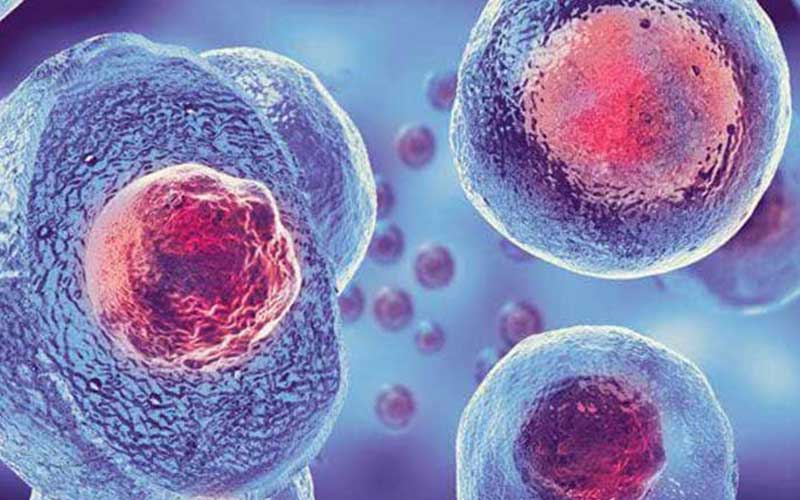What is cell therapy? A comprehensive guide to cell therapy and its applications in modern medicine

What is cell therapy? A comprehensive guide to cell therapy and its applications in modern medicine
Introduction: Cell therapy, a revolution in modern medicine
In recent decades, significant advances in biotechnology and regenerative medicine have opened up new horizons in the treatment of diseases. Cell therapy, as one of these advances, is a new method that uses living cells to repair, replace, or regenerate damaged tissues. This method is not only used in the treatment of chronic and complex diseases such as cancer and diabetes, but also plays a significant role in improving the quality of life of patients. The Spanta Center, one of the pioneers in this field in Iran, is developing advanced cell therapy methods by utilizing the knowledge of experts such as Dr. Mojtaba Mostafazadeh. In this article, we will examine various aspects of this technology, from its definition and types to its challenges and future. Stay tuned with the Spanta Center.
What is cell therapy?
Cell therapy is the use of living cells to treat diseases or regenerate damaged tissues. These cells can be taken from the patient’s own body (autologous) or from donors (allogeneic). The main goal of this method is to replace defective or damaged cells with healthy, functional cells. For example, in the treatment of leukemia, hematopoietic stem cells from a donor are transplanted into the patient to rebuild the body’s immune system.
Types of cell therapy
-
Stem cells:
-
Embryonic stem cells: These cells are extracted from early embryos and have the ability to differentiate into different cell types. However, their use is challenging due to ethical issues.
-
Adult stem cells: These cells are extracted from tissues such as bone marrow or fat and are used in treatments such as bone marrow transplants.
-
Induced pluripotent stem cells (iPSCs): These cells are made from adult cells in the patient’s body and have great potential for personalized therapies.
-
-
Immune cells:
-
CAR-T therapy: In this method, the patient’s T cells are extracted from the body, genetically modified in the laboratory, and then returned to the body to attack cancer cells. This method is particularly effective in treating leukemia and lymphoma.
-
-
Specialized cells:
- This type involves using cells such as cardiomyocytes (heart muscle cells) to treat heart disease or nerve cells for neurodegenerative diseases.
The Spanta Center, in collaboration with experts such as Dr. Mojtaba Mostafazadeh, works in the field of using stem cells and immunity to treat various diseases and seeks to provide new solutions for patients.
Applications of cell therapy
Cell therapy is used to treat a wide range of diseases. Some of its most important applications include:
-
Cancer treatment: Methods such as CAR-T and bone marrow transplants have helped patients with leukemia have a better chance of recovery.
-
Heart disease: Stem cells can be used to regenerate heart tissue after a heart attack.
-
Neurological diseases: In diseases such as Parkinson’s and Alzheimer’s, cell therapy has been investigated to replace damaged neurons.
-
Type 1 diabetes: The use of insulin-producing cells to treat this disease is being developed.
-
Tissue repair: Cell therapy is used to repair damaged tissues such as cartilage and skin in diseases such as arthritis or burns.
Using advanced technologies and the knowledge of Dr. Mojtaba Mostafazadeh, the Spanta Center is researching and developing cell therapy methods for chronic diseases and providing Iranian patients with access to these advanced treatments.
Benefits and challenges of cell therapy
Advantages:
-
Targeted therapy: Cell therapy can specifically target diseased cells and has fewer side effects than traditional methods such as chemotherapy.
-
Regenerative potential: This method has the ability to regenerate damaged tissues, which is less common in other methods.
-
Personalization: Using a patient’s own cells allows for personalized treatments.
Challenges:
-
High cost: The production and preparation of therapeutic cells is expensive and may not be accessible to all patients.
-
Ethical issues: The use of embryonic stem cells remains a subject of ethical debate.
-
Side effects: There is a risk of transplant rejection or immune reactions with some cell therapy methods.
Dr. Mojtaba Mostafazadeh and the research team at the Spanta Center are working to optimize treatment processes, reduce costs, and make access to this technology easier for Iranian patients.
The role of the Spanta Center and Dr. Mojtaba Mostafizadeh in cell therapy
As one of the leading centers in Iran, focusing on the research and application of cell therapy, the Spanta Center plays an important role in the development of this technology in the country. The center, using advanced equipment and with experts such as Dr. Mojtaba Mostafizadeh, seeks to provide safe and effective treatments for patients. With years of experience in the field of biotechnology and regenerative medicine, Dr. Mostafizadeh has conducted extensive research in the field of stem cells and their therapeutic applications. These efforts have contributed to the development of new methods for the treatment of complex diseases.
The future of cell therapy
With recent advances in biotechnology, the future of cell therapy looks very promising. The development of technologies such as gene editing (CRISPR) and induced stem cells has enabled more precise and effective treatments. Also, the reduction in costs and increased access to these technologies could make cell therapy one of the main treatment methods in the future. The Spanta Center, with the support of experts such as Dr. Mojtaba Mostafazadeh, is at the forefront of these developments and is seeking to localize these technologies in Iran.
Conclusion
Cell therapy, as one of the most advanced treatment methods, has the potential to change medical approaches. This method, using living cells, has made it possible to treat incurable diseases and has brought new hope to patients. The Spanta Center and experts such as Dr. Mojtaba Mostafazadeh, with their efforts in this field, contribute to the development and accessibility of this technology in Iran.
